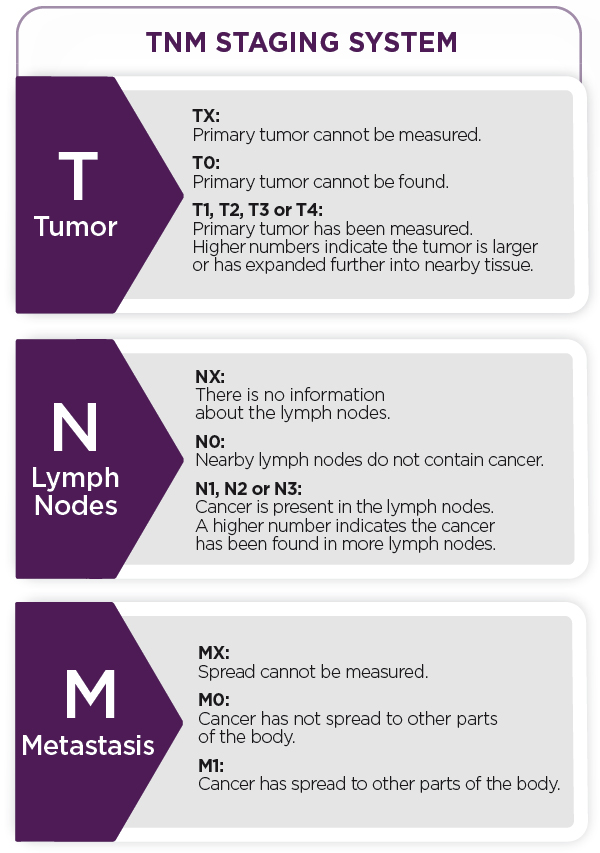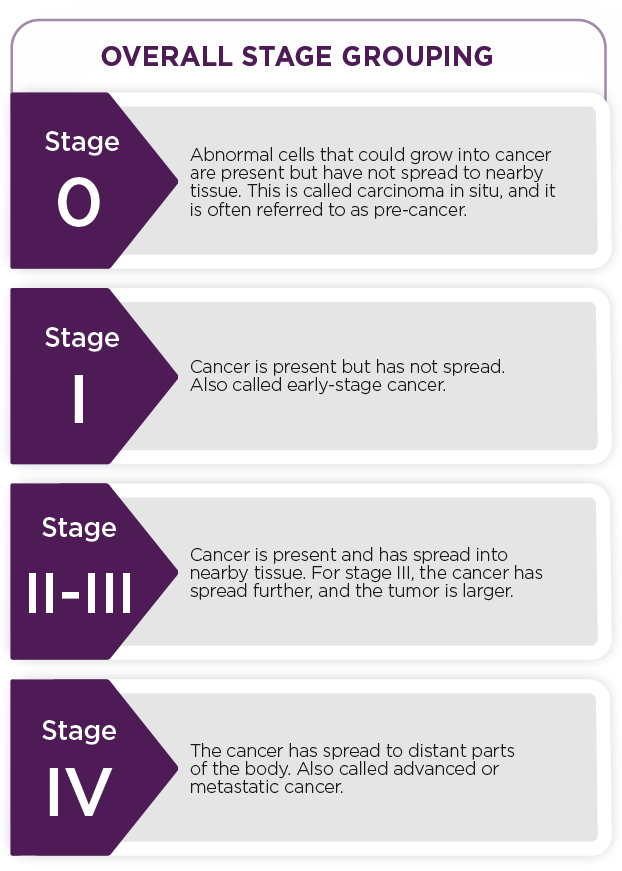A CANCER DIAGNOSIS COMES with a ton of new and confusing words—from cancer types such as adenocarcinoma to medications with multisyllabic names. Amid all the unfamiliar terms, understanding your cancer stage can help deepen insight into your treatment plan and potential outcomes.
Cancer stages describe the extent of the cancer, including whether it has spread to other parts of the body. Patients typically have their cancer staged before treatment begins and after diagnostic tests, such as biopsies, blood tests and X-rays. Additionally, for some patients who have surgery as part of their treatment, lab analysis of the tumor sample and nearby lymph nodes can provide more information about the cancer.
The TNM system is one of the most common staging formats used to characterize the extent of a patient’s cancer. T stands for tumor, N for lymph nodes and M for metastasis, or cancer spread, with each category assigned a number— written as, for example, T2N1M0. The TNM information is used to assign a more general stage grouping, which ranges from stages 0 to IV based on the cancer’s progression. Not all cancers use these staging systems. For example, blood, brain and pediatric cancers typically are characterized differently.


Sources: American Cancer Society, American Society of Clinical Oncology, National Cancer Institute
Cancer Today magazine is free to cancer patients, survivors and caregivers who live in the U.S. Subscribe here to receive four issues per year.





